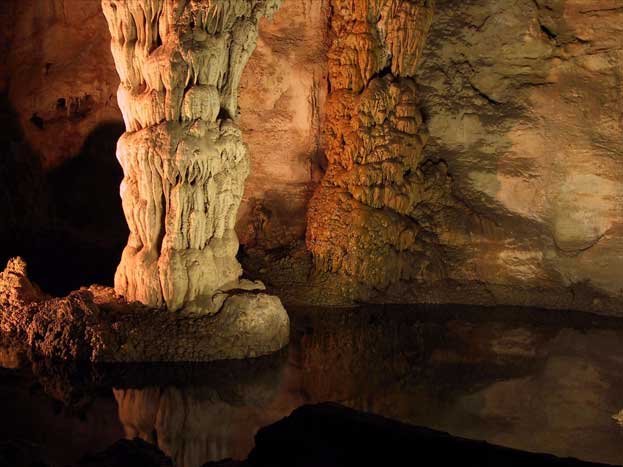The more than 100 limestone caves within Carlsbad Caverns National Park are outstanding and notable world-wide because of their size, mode of origin, and the abundance, diversity and beauty of the speleothems (decorative rock formations) within. On-going geologic processes continue to form rare and unique speleothems, particularly in Lechuguilla Cave. Carlsbad Caverns and Lechuguilla Cave are well known for their great natural beauty, exceptional geologic features, and unique reef and rock formations. The Permian-aged Capitan Reef complex (in which Carlsbad Caverns, Lechuguilla and other caves formed) is one of the best preserved and most accessible complexes available for scientific study in the world.

Continent: North America
Country: United States of America
Category: Natural
Criterion: (VII)(VIII)
Date of Inscription: 1995
Karst Landscape
This karst landscape in the state of New Mexico comprises over 80 recognized caves. They are outstanding not only for their size but also for the profusion, diversity and beauty of their mineral formations. Lechuguilla Cave stands out from the others, providing an underground laboratory where geological and biological processes can be studied in a pristine setting. The park covers a segment of the Permian fossil Capitan Reef. An extensive cave system has developed within the reef as a result of sulphuric acid dissolution and of the 81 known caves, Carlsbad Cavern is the largest and Lechuguilla Cave is the most extensive and decorated cave in the world.The Capitan Reef complex dates back to the Permian period, some 280-225 million years ago. The exposed sections of this reef lying within the park are among the best preserved in the world accessible for scientific study. Geologists are able to study the rock formations not only through cave passages which penetrate the reef but also in exposures uncovered through erosion. Fossils include bryozoans, pelecypods, gastropods, echinoderms, brachiopods, fusulinds, sponges, trilobites and algae. Above-ground vegetation communities range from desert to coniferous forest.
 |
| Limestone Caves |









No comments:
Post a Comment